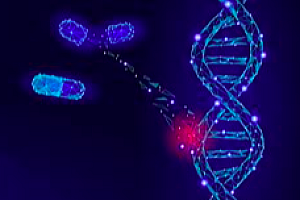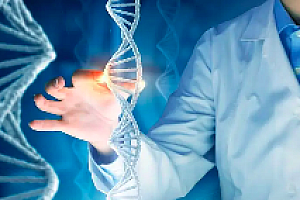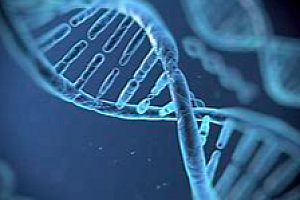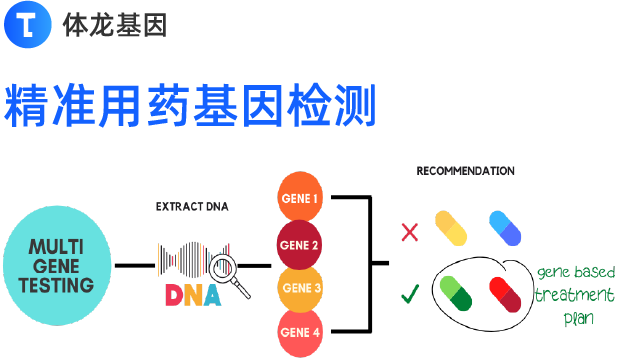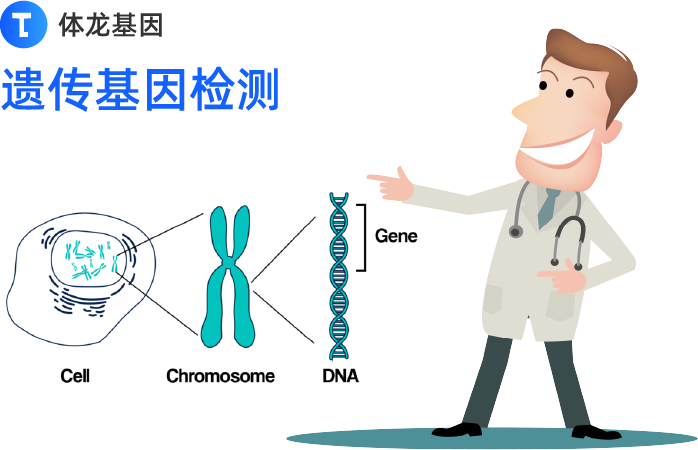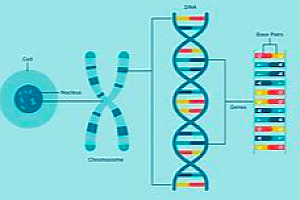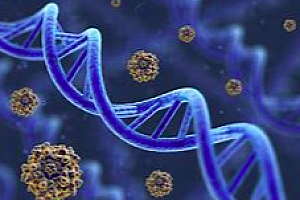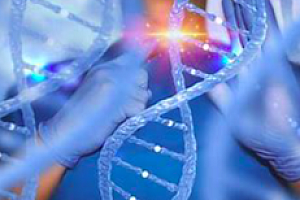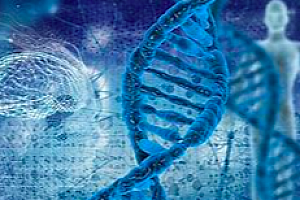前言微小残留病灶(MRD)是指早中期癌症患者在经过根治性治疗后,体内仍然残留肿瘤细胞的状态,传统影像学或内镜不能发现,但通过液体活检可发现的恶性肿瘤来源分子异常,是引起复发的主要危险因素之一。MRD检测最早应用于血液肿瘤,已成为临床标准实践的一部分[1]。其指标主要包括ctDNA、CTCs、血清学肿瘤标志物等,其中基于ctDNA突变的MRD检测技术在灵敏度和特异性方面具有明显优势[11-12]。作者:彭帆 刘洋 郭旭 邢金良实体瘤ctDNA-MRD检测策略 实体瘤ctDNA-MRD检测策略主要分为两大类:(1)肿瘤知情分析(Tumor-informed assays or Tumor-Bespoke assays),即先对原发肿瘤组织进行测序以鉴定患者特异性变异图谱,然后进行个性化ctDNA检测分析[13];(2)肿瘤不知情分析(Tumor-agnostic assays or Tumor-agnostic assays),即无需原发肿瘤组织,仅依赖于一组已知的肿瘤相关高频突变位点进行ctDNA检测分析,常在检测ctDNA突变的同时,辅以ctDNA甲基化或片段组学等多组学方法[14]。MRD的低频ctDNA突变检测技术 目前用于评估MRD的低频ctDNA突变检测技术主要分为两类:一类是基于PCR的检测技术,主要包括数字微滴聚合酶链式反应(ddPCR)、数字PCR-流式技术BEAMing、突变扩增阻滞系统(ARMS);另一类是基于NGS的检测技术,如标记扩增深度测序(Tam-Seq)、癌症个性化深度测序(CAPP-Seq)、集成数字错误抑制方法(iDES)、Safer-SeqS、定向变异富集测序技术(phasED-seq)、全基因组测序(WGS)和全外显子组测序(WES)[15-18]。ARMS、ddPCR和BEAMing对不同阶段的癌症具有极好的敏感性和检测能力,且检测周期短,成本低,但这些方法只能识别已知突变,并且通量较低[19-20]。NGS是一种高通量技术,可以检测以前未识别的变异。虽然全外显子组或全基因组测序可以提供更详细的基因组信息,但因成本的限制很难实现超高深度测序,因此临床上多利用靶向富集测序策略,以更低的成本和更高的测序深度提供更精准的ctDNA突变信息。Tam-Seq通过设计特异性引物对目标区域进行预扩增,再利用单重PCR选择性扩增带突变的扩增子区,从而降低非特异性。但该方法只能识别突变频率>2%的突变位点,灵敏度有待进一步提高[19]。优化的Tam-Seq技术扩展了靶基因的个数,并增强了数据分析的算法,使其能准确识别突变频率低至0.02%的突变位点,每碱基的特异度为99.9997%[21]。CAPP-Seq通过筛选139个肺癌相关高频突变基因,包括521个外显子及12个内含子,将测序区段浓缩到整个基因组大小的0.004%,进而实现超深度测序,准确检测异质性水平低至0.02%的ctDNA突变[17]。iDES是针对CAPP-Seq的优化技术,综合了单链条形码和双链条形码的各自优势,并设计了一种“背景抛光”计算方法,使错误率降低了15倍,实现了EGFR激活域突变的精准分析,灵敏度为92%,特异度为96%[22]。Safer-Seq利用分子条形码以及巢式PCR区分正反义链,识别PCR及测序错误,进一步提高ctDNA突变检测的灵敏度及特异度[23]。Phased-seq通过跟踪单个cfDNA片段上2个或多个变异检测ctDNA,灵敏度更高,突变检出限可降至百万分之一[16]。Pedram等[24]设计了一种基于cfDNA和白细胞联合分析的MRD检测方法,能够从头识别肿瘤起源的变化,并解释微卫星不稳定性、肿瘤突变负荷、突变特征和cfDNA中发现的体细胞突变的起源。人工智能在检测MRD中的应用 此外,新的计算工具对于数据分析、数据集成至关重要。人工智能和机器学习方法,如支持向量机和神经网络模型,可以发现癌症生物标志物,检测高维数据集中的癌症特异性特征,并构建前瞻性统计分类器,用于评估独立队列的诊断性能。人工智能和机器学习层面的研究发展也在不断的进步和优化,为MRD检测技术带来了巨大的机遇。C2i Genomics开发了基于全基因组联合多指标的MRD检测技术,利用原发肿瘤组织和对照血进行WGS检测,通过整合突变位点、突变负荷及测序深度构建机器学习模型,鉴定肿瘤患者的特异性体细胞突变特征,基于此,计算肿瘤患者血浆样本全基因组水平的肿瘤信号,以实现MRD的精准检测[25]。Xianghong Jasmine Zhou团队利用WES数据,通过整合患者已知克隆肿瘤突变的信号来敏感地检测MRD和癌症复发,并采用一系列的机器学习和统计去噪技术提高检测能力[26]。MRD检测技术面临的挑战 尽管许多研究结果显示MRD检测具有重要的应用价值,但基于ctDNA的检测在治疗决策和肿瘤监测方面的临床广泛应用仍面临诸多挑战。1、ctDNA分析的有限灵敏度是一个关键的挑战,ctDNA总量约占cfDNA的0.01%,其数量取决于肿瘤类型、肿瘤负荷和其他生物过程等,如血浆核酸酶的活性。特别是行肿瘤根治术的早期癌症患者中,MRD阴性可能是由于ctDNA低丰度而不是由于MRD的缺失[15]。2、肿瘤时空异质性也是MRD检测的主要挑战之一,部分肿瘤患者特定肿瘤组织样本检测到的突变信息有限,可能无法很好地反映肿瘤整体情况,因此根据特定肿瘤组织信息定制的Panel代表性可能存在不足,会漏检部分突变。3、其次,随着临床治疗和疾病进展,原发肿瘤基因图谱发生改变,同时肿瘤克隆也可能一直处于不断进化当中。而肿瘤知情分析策略仅考虑术中肿瘤组织中的突变信息,而无法对新发突变进行覆盖,使得MRD的后续监测准确性有所下降。4、此外,潜质未定的克隆性造血(clonal hematopoiesis of indeterminate potential,CHIP)以及测序过程中引入的随机错误可导致假阳性ctDNA突变[27]。在液体活检分析中,整合来自外周血细胞的突变信息是区分肿瘤来源和克隆性造血相关突变的关键。5、另一个需要克服的障碍是各种ctDNA分析之间缺乏一致性,这限制了对现有结果的解释,包括样本采集的时间点、样本采集过程、采血量、存储过程、文库准备过程、突变识别和过滤测序错误。规范的ctDNA采集、存储和分析方法对于确保ctDNA精准检测在常规临床实践中的广泛应用至关重要。此外,许多人工智能和机器学习模型被理解为“黑箱”,即无法解释模型选择特征(例如肿瘤标志物)的原因。一些人工智能和机器学习模型设计不佳,样本量不足,存在偏差和过度拟合的风险,为其临床应用带来了一定的局限性。小结 精准医学时代,MRD检测是液体活检的重要潜在应用,在提供临床决策支持和提高患者生存结果方面大有裨益。随着越来越多的证据积累,表明ctDNA可以作为MRD检测的生物标志物,在治疗决策和改善预后中发挥重要作用,ctDNA检测策略的不断发展也为实现MRD的临床推广提供助力。但在MRD评估实现临床实践中应用之前,仍存在需解决和完善的关键问题,包括术后采血的时间窗、采血量的统一规范,以及评估MRD阳性患者升级治疗是否能改善癌症预后,MRD阴性患者降级治疗是否安全。对于肺癌、结直肠癌、肝癌、乳腺癌等实体肿瘤来说,MRD检测在未来几年无疑将成为临床实践中的有效诊断指标。参考文献 [1]Yin JA, O’Brien MA,Hills RK,et al.Minimal residual disease monitoring by quantitative RT-PCR in core binding factor AML allows risk stratification and predicts relapse: results of the United Kingdom MRC AML-15 trial[J]. Blood, 2012,120,(4):2826-2835. [2]Friedlaender A, Drilon A, Weiss GJ,et al.KRAS as a druggable target in NSCLC: Rising like a phoenix after decades of development failures[J]. Cancer Treat Rev, 2020,85:101978. [3]Friedlaender A, Banna G,Patel S,et al.Diagnosis and treatment of ALK aberrations in metastatic NSCLC[J].Curr Treat Options Oncol, 2019,20(10):79. [4]Chae YK,Oh MS.Detection of minimal residual disease using ctDNA in lung cancer: current evidence and future directions[J].J Thorac Oncol, 2019,14(1):16-24. [5]Abbosh C, Birkbak NJ,Wilson GA,et al.Phylogenetic ctDNA analysis depicts early-stage lung cancer evolution[J].Nature,2017 ,545(7655):446-451. [6]Radovich M, Jiang G,Hancock BA,et al.Association of circulating tumor DNA and Circulating cumor cells after neoadjuvant chemotherapy with disease recurrence rn Patients with triple-negative breast cancer: preplanned secondary analysis of the BR2-158 randomized clinical trial[J].JAMA Oncol, 2020,6(9):1410-1415. [7]Chen G, Peng J,Xiao Q,et al.Postoperative circulating tumor DNA as markers of recurrence risk in stages II to III colorectal cancer[J].J Hematol Oncol, 2021,14( 1):80. [8]Zhao L, Jiang L,Liu Y,et al.Integrated analysis of circulating tumour cells and circulating tumour DNA to detect minimal residual disease in hepatocellular carcinoma[J].Clin Transl Med, 2022,12(4): e793 [9]Christensen E, Birkenkamp-Demtroder K,Sethi H,et al.Early detection of metastatic relapse and monitoring of therapeutic efficacy by ultra-Deep sequencing of plasma cell-Free DNA in patients with urothelial bladder carcinoma[J].J Clin Oncol, 2019,37(18):1547-1557.[10]Xia L, Mei J,Kang R,et al.Perioperative ctDNA-based molecular residual disease detection for non-small cell Lung cancer: A prospective multicenter cohort study (LUNGCA-1)[J].Clin Cancer Res,2021.[11]Azad TD, Chaudhuri AA.,Fang P,et al.Circulating tumor DNA analysis for detection of minimal residual disease after chemoradiotherapy for localized esophageal cancer[J].Gastroenterology, 2020,158(3):494-505.[12]Cackowski FC,Taichman RS.Minimal residual disease in prostate cancer[J].Adv Exp Med Biol, 2018,1100:??47-53.[13]Reinert T, Henriksen TV,Christensen E, et al.Analysis of plasma cell-Free DNA by ultradeep sequencing in patients with stages I to III colorectal cancer[J].JAMA Oncol, 2019,5(8):1124-1131.[14]Parikh AR, Van Seventer EE,Siravegna G,et al.Minimal residual disease detection using a plasma-only circulating tumor DNA assay in patients with colorectal cancer[J].Clin Cancer Res, 2021,27(20):5586-5594.[15]Song P, Wu LR,Yan YH,et al.Limitations and opportunities of technologies for the analysis of cell-free DNA in cancer diagnostics[J].Nat Biomed Eng,2022,6(3):232-245.[16]Kurtz DM, Soo J,Co TK,et al.Enhanced detection of minimal residual disease by targeted sequencing of phased variants in circulating tumor DNA[J].Nat Biotechnol, 2021,39(12):1537-1547.[17]Newman AM, Bratman SV,To J,et al.An ultrasensitive method for quantitating circulating tumor DNA with broad patient coverage[J].Nat Med, 2014,20(5): 548-554.[18]Maslov AY, Makhortov S,Sun S,et al.Single-molecule, quantitative detection of low-abundance somatic mutations by high-throughput sequencing[J].Sci Adv, 2022,8(14):3259.[19]Elazezy M,Joosse SA.Techniques of using circulating tumor DNA as a liquid biopsy component in cancer management[J].Comput Struct Biotechnol J, 2018,(16):370-378.[20]Kerachian MA, Poudineh A,Thiery JP.Cell free circulating tumor nucleic acids, a revolution in personalized cancer medicine[J].Crit Rev Oncol Hematol, 2019,144: 102827.[21]Gale D, Lawson A,Howarth K,et al.Development of a highly sensitive liquid biopsy platform to detect clinically-relevant cancer mutations at low allele fractions in cell-free DNA[J].PLoS One, 2018,13(3):e194630.[22]Newman AM, Lovejoy AF,Klass DM,et al.Integrated digital error suppression for improved detection of circulating tumor DNA[J].Nat Biotechnol, 2016,34(5):547-555.[23]Cohen JD, Douville C,Dudley JC,et al.Detection of low-frequency DNA variants by targeted sequencing of the Watson and Crick strands[J].Nat Biotechnol, 2021,39(10):1220-1227.[24]Razavi P, Li BT,Brown DN, et al.High-intensity sequencing reveals the sources of plasma circulating cell-free DNA variants[J].Nat Med, 2019,25(12):1928-1937.[25]Zviran A, Schulman RC,Shah M,et al.Genome-wide cell-free DNA mutational integration enables ultra-sensitive cancer monitoring[J].Nat Med,2020,26(7): 1114-1124.[26]Li S, Zeng W,Ni X,et al.CfTrack: A method of exome-wide mutation analysis of cell-free DNA to simultaneously monitor the full spectrum of cancer treatment outcomes including MRD, recurrence, and evolution[J].Clin Cancer Res,2022 ,28, (9):1841-1853.[27]Genovese G, Kahler AK,Handsaker RE,et al.Clonal hematopoiesis and blood-cancer risk inferred from blood DNA sequence[J].N Engl J Med, 2014,371(26):2477-2487.
(责任编辑:dawenwu)
恶性肿瘤微小残留病灶检测的技术与局限 | 专家论坛
696



